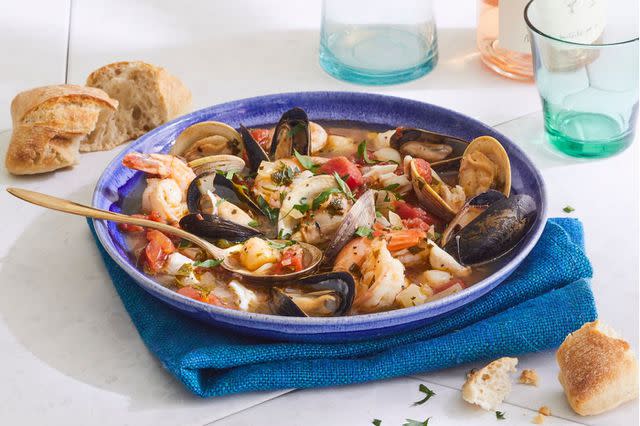What to Use When You're out of Oregano
The best oregano substitutes to make deliciously savory meals in a pinch.

Oregano is a common herb that crops up dried and fresh in numerous cuisines. There's a good chance that what you're planning on for dinner calls for oregano in some form. Dried oregano is a primary flavor in some pizza and pasta sauce, Greek chicken, kebabs, and more. But if you find your spice cabinet and crisper drawer without oregano, there are a few other options that will be just as delicious.
What Does Oregano Taste Like and How Is It Used?
If you can't quite put your finger on what oregano tastes like, think back to the last time you had pizza sauce, Italian seasoning, or Greek salad. All those foods contain oregano, likely the main herbal note you associate with them. Oregano is highly aromatic; a little bit goes a long way. Its flavor is slightly bitter and medicinal, with notes of licorice and a mild, sweet finish.
Related: What Exactly Is Oregano?
How to Substitute Dried for Fresh
Fresh oregano has delicate leaves that can wilt quickly. If you find yourself with some fresh oregano that's past its prime or none at all, dried oregano can easily be substituted. Use one teaspoon of dried oregano for every tablespoon of fresh chopped oregano. This swap is great for dishes that are cooked; dried oregano doesn't work as well as fresh in Greek salads or sauces like chimichurri, where fresh oregano is kept raw.
If you need dried oregano and only have fresh, this swap works the other way too– use one tablespoon of fresh, chopped oregano for every teaspoon of dried oregano a recipe calls for.

Get the recipe: Cioppino
Best Oregano Substitutes
Marjoram
Oregano and marjoram are very closely related and, thus, make perfect replacements for one another– both fresh and dried. Marjoram is slightly sweeter and a bit milder than oregano, so use equal amounts to swap and then add in a pinch more to get as close to oregano's pungent flavor as possible.
Fresh marjoram is an excellent proxy for when a recipe calls for fresh oregano to be left raw; it has a comparable flavor with slightly less bite. Marjoram is a great swap for all common types of oregano, including Mexican oregano, a milder variety of oregano. Like oregano, marjoram goes well with lamb and is often found in sausage spices and as part of an herbaceous medley for braised meats like pot roast.
Tarragon
Both tarragon and oregano share a similar licorice-like flavor, os this makes an easy alternative. Tarragon has a stronger anise-like taste, so use about ⅔ the amount of fresh tarragon as a recipe calls for fresh oregano. This swap works best for recipes that call for fresh oregano to be left raw, like salads, dressings, or as a finishing touch on the classic Greek lemon chicken and potatoes.
Dried tarragon can also be used to stand in for dried oregano; use them in equal amounts.
Related: What Is Italian Seasoning?
Italian Seasoning
Oregano, along with basil, is usually the first or second ingredient in Italian Seasoning. If you're out of dried oregano and are making something that wouldn't mind a bit of dried basil or already calls for the other ingredients in Italian seasoning, like pizza sauce, this is the perfect swap. Use equal amounts of Italian seasoning for dried oregano, as it's a blend of seasonings.
Thyme
Thyme and oregano are similar flavors that are often used together in many Middle Eastern cuisines, especially when it comes to seasoning meat like roasted lamb or meat for a gyro. Unlike oregano, thyme is almost always cooked, similar to other woody-stemmed herbs like rosemary. Fresh thyme is a great swap for fresh oregano when it's going to be cooked, but can be too overpowering if left raw.
Related:
Read the original article on All Recipes.

